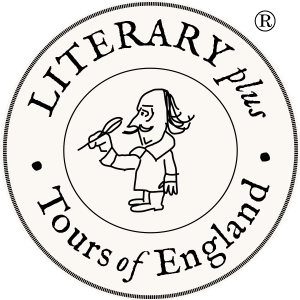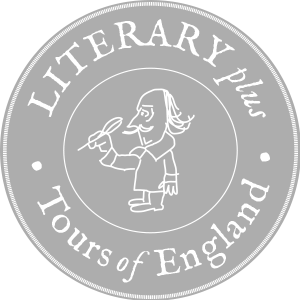
Sherlock Holmes Museum
Arthur Conan Doyle
Charles Dickens Museum
Charles Dickens
Poets' Corner
Westminster Abbey
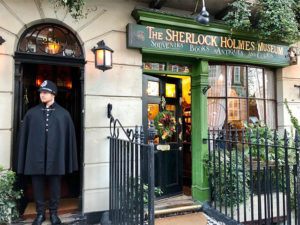
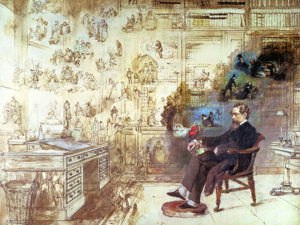
Charles Dickens Museum
Charles Dickens
The tours begin and end at London Heathrow airport (LHR).
The details below describe the tour highlights. Supplementary sites and stopping points will be included wherever feasible. All tours can be customized. So, once you’ve made a selection, we’ll contact you to review and refine the itinerary to reflect your personal preferences.
The guide prices shown below relate to escorted tours and assume double room occupancy in luxurious 4- or 5-star city center hotels. The actual price of your tour will depend on the make-up of your tour party, your accommodation preference, special needs, seasonal variations, availability and currency exchange rates. You will be provided with a firm quote before you book.
Guide price $5,190 (escorted / based on 2 people)
Poets’ Corner in Westminster Abbey is a unique place of pilgrimage for literature lovers. There are memorials here to more than a hundred writers, including statues of William Shakespeare and William Wordsworth. Some are buried here: Robert Browning, Geoffrey Chaucer, Charles Dickens, John Dryden, Dr Samuel Johnson, Rudyard Kipling, Alfred Lord Tennyson, among others, and the ashes of Thomas Hardy. Elsewhere in the Abbey there are memorials to John Bunyan, Winston Churchill and Noel Coward and the grave of Charles Darwin.
This historic area of London – including Westminster Abbey, the Palace of Westminster (which contains the Houses of Parliament) and St Margaret’s Church (with its John Milton memorial window) – has been designated a World Heritage Site.
Nearby – beneath the streets of Westminster – are the Churchill War Rooms, the underground bunker from which Winston Churchill and his wartime cabinet directed allied operations throughout the Second World War. The site also includes the Churchill museum, recounting the life and legacy of the great man.
Also in Westminster is Buckingham Palace, the Queen’s official London residence. Queen Victoria was the first sovereign to live in the Palace: it became her official residence on her accession to the throne in 1837. Visitors are able to explore the magnificent State Rooms, including the Picture Gallery containing works of art from the Royal Collection. Recognized around the world as the focus of national and royal celebrations, Buckingham Palace is also the backdrop to the regular ‘Changing the Guard’ ceremony.
Charles Dickens lived and worked in London for much of his life. The modest Charles Dickens Museum, located in a terraced Georgian house in Bloomsbury, was his home from 1837 to 1839. It was while living here that Dickens wrote Oliver Twist and Nicholas Nickleby, the success of which catapulted him to international fame and provided him with the means to move his growing family to larger homes.
Close by is the magnificent British Museum. Its permanent collection – dedicated to human history, art and culture – numbers some eight million works and is among the most comprehensive in the world.
Sherlock Holmes lived at 221B Baker Street between 1881 and 1904, according to the stories written by Arthur Conan Doyle. The Sherlock Holmes Museum – a classic Georgian townhouse that’s actually at number 239 – is filled with all kinds of Holmes memorabilia. The nearby larger-than-life statue shows the great consulting detective in characteristic pose.
Dr Johnson’s House is a charming 300-year-old townhouse (now a fascinating museum) nestled amongst a tangle of ancient alleys in the historic City of London. Johnson lived and worked here from 1748 to 1759, diligently compiling his Dictionary of the English Language of more than 40,000 words.
Close by – in a narrow alley off Fleet Street – is Ye Olde Cheshire Cheese. This atmospheric pub, rebuilt shortly after the Great Fire of 1666, was a regular haunt of many literary figures, including Dr Johnson, Charles Dickens and Arthur Conan Doyle.
A short distance away is St Paul’s Cathedral, designed by Christopher Wren and also built following the Great Fire. With its world-famous dome, the cathedral is an awe-inspiring feature of the London skyline. Many state occasions have been held here, including the funeral of Winston Churchill in 1965 and the wedding of Prince Charles and Princess Diana in 1981.
Tower of London
World Heritage Site
Royal Botanic Gardens, Kew
World Heritage Site
Palace of Westminster
Houses of Parliament
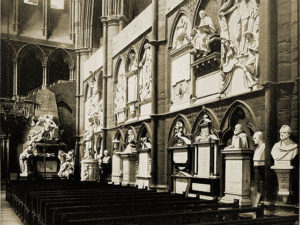
Poets’ Corner
Westminster Abbey
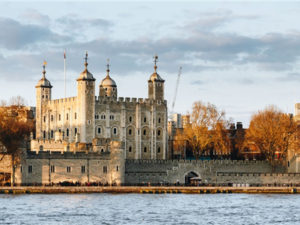
Tower of London
World Heritage Site
Guide price $8,490 (escorted / based on 2 people)
In addition to all of the above …
Cheyne Walk in elegant Chelsea has long been one of London’s great literary streets. Elizabeth Gaskell was born at number 93 in 1810. George Eliot died at number 4 in 1880. In the adjacent Cheyne Row is the wonderful Carlyle’s House, a Georgian terraced house that’s been preserved much as it was when Thomas Carlyle lived here from 1834 until his death in 1881. Literary celebrities of the time were frequent visitors, including Browning, Dickens, Eliot, Ruskin, Tennyson, Thackeray and the young Oscar Wilde. Carlyle’s masterwork The French Revolution: A History was the inspiration for Dickens’ A Tale of Two Cities.
The Victorian-style interior of the Sherlock Holmes pub is loaded with references to stories and film adaptations featuring the fictional detective. Upstairs there’s a detailed recreation of Holmes’ famous Baker Street flat and an exhibition replicating his living quarters.
Just a few steps from the pub is Trafalgar Square, celebrating Lord Nelson’s famous victory over the French fleet in 1805. On one side of the square is the National Gallery, housing a collection of over 2,300 paintings dating from the mid-13th Century to 1900. Close by is the National Portrait Gallery, housing a collection of portraits of historically important British people (among them the famous Chandos portrait of William Shakespeare).
Begun by William the Conqueror in 1066 and now a World Heritage Site, the Tower of London is an impressive example of Norman military architecture. With additions by Edward I and Henry III, the castle became one of England’s most significant buildings. The Tower has played a prominent role in English history: controlling it has been important to controlling the entire country. It has served as an armoury, a treasury, a menagerie, the home of the Royal Mint, a public record office and the home of the Crown Jewels. Spanning the River Thames nearby, Tower Bridge (built 1886-1894) is one of London’s most recognizable landmarks. The high-level walkways offer stunning panoramic views across the city.
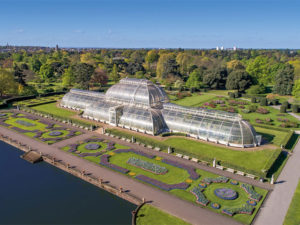
Royal Botanic Gardens, Kew
World Heritage Site

Palace of Westminster
Houses of Parliament
Guide price $11,250 (escorted / based on 2 people)
In addition to all of the above …
South Kensington – an affluent area of west London – is home to three of the city’s biggest and most exciting museums. The Natural History Museum houses a vast range of specimens from various aspects of the natural world. A massive statue of Charles Darwin dominates its central hall. The Science Museum holds a collection of more than 300,000 items and hundreds of interactive exhibits. The Victoria and Albert Museum is the world’s largest museum devoted to decorative arts and design, housing a permanent collection of over two million objects.
A leisurely cruise down the River Thames from Westminster leads to Maritime Greenwich: a unique World Heritage Site comprising Christopher Wren’s splendid Old Royal Naval College, the Royal Observatory (home of the Prime Meridian of Longitude and world time), the National Maritime Museum and other historic monuments. The Old Royal Naval College has been used as a location in countless films including Sense and Sensibility (1995), An Ideal Husband (1999), Vanity Fair (2004), The King’s Speech (2010) and the excellent BBC TV adaptation of Great Expectations (2011).
We recommend devoting a day to explore one the following remarkable sites outside central London:
The spectacular Royal Botanic Gardens in Kew (seven miles southwest of London) is another World Heritage Site. Created in 1759 and covering almost 300 acres, Kew Gardens houses the most diverse botanical and mycological collection in the world dedicated to the study and deeper understanding of botany and ecology.
The imposing Hampton Court Palace, dating from 1515, is situated by the River Thames twelve miles upstream from London. In addition to the fabulous palace and its lovely gardens, other points of interest include the celebrated maze and historic real tennis court. The palace provided many locations for the 2018 feature film The Favourite, set in the time of Queen Anne (1602-07) played by Olivia Colman. It has also been used as the backdrop for many other films, most memorably the multi Oscar winning A Man for All Seasons (1966) starring Paul Schofield as Thomas More.
Twenty miles northwest of London, the brilliant Warner Bros Studio Tour (The Making of Harry Potter) immerses the visitor in the magic of film-making. This permanent exhibit offers an amazing – not to say awesome – glimpse behind the scenes of the hugely successful Harry Potter films (2001-11). According to TripAdvisor, it’s been the highest rated attraction worldwide every year since it opened in 2012!
